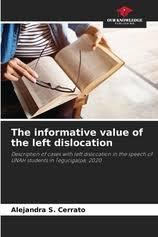Question
Matt and Carrie are married, have two children, and file a joint return. Their daughter Katie is 19 years old and was a full-time student
Matt and Carrie are married, have two children, and file a joint return. Their daughter Katie is 19 years old and was a full-time student at State University. During 2016, she completed her freshman year and one semester as a sophomore. Katies expenses while she was away at school during the year were as follows: Use Tax Rate Schedule for reference.
| Tuition | $ | 5,000 |
| Class fees | 300 | |
| Books | 500 | |
| Room and board | 4,500 | |
Katie received a half-tuition scholarship that paid for $2,500 of her tuition costs. Katies parents paid the rest of these expenses. Matt and Carrie are able to claim Katie as a dependent on their tax return. Matt and Carrie's 23-year-old son Todd also attended graduate school (fifth year of college) full time at a nearby college. Todds expenses while away at school were as follows:
| Tuition | $ | 3,000 |
| Class fees | 0 | |
| Books | 250 | |
| Room and board | 4,000 | |
Matt and Carrie paid for Todd's tuition, books, and room and board. Since Matt and Carrie still benefit from claiming Todd as a dependent on their tax return, they decided to provide Todd with additional financial assistance by making the payments on Todds outstanding student loans. Besides paying off some of the loan principal, Matt and Carrie paid a total of $900 of interest on the loan. This year Carrie decided to take some classes at the local community college to help improve her skills as a school teacher. The community college is considered to be a qualifying post secondary institution of higher education. Carrie spent a total of $1,300 on tuition for the classes, and she was not reimbursed by her employer. Matt and Carrie's AGI for 2016 before any education related tax deductions is $121,000 and their taxable income before considering any education-related tax benefits is $80,000. Matt and Carrie incurred $500 of miscellaneous itemized deductions subject to the 2 percent floor not counting any education-related expenses.
Their options for credits for each student are as follows:
They may claim either a credit or a qualified education deduction for Katies expenses.
They may claim either a credit or a qualified education deduction for Todd.
They may claim (1) a credit or (2) a qualified education deduction for Carrie. They may deduct any amount not included in (1) or (2) as a miscellaneous itemized deduction subject to the 2 percent of AGI floor.
Consider two alternatives: Alternative 1: Claim all $3,000 of Todds expense as a for AGI deduction and $1,000 of Katies expenses as a for AGI deduction. Finally, deduct Carries expenses as a from AGI deduction. Alternative 2: Claim $3,000 for AGI deduction for Todds expense, claim $1,000 of Carries expense as a for AGI deduction, claim the remaining $300 of Carries expenses as a from AGI deduction, and claim the American opportunity credit (AOC) for Katies expenses.
Remember to apply any applicable limits or phase-outs in your computations. a. Which mix of tax benefits provides the most tax savings?
| Alternative 1 | |
| Alternative 2 |
b. What is the total tax savings for the alternative you selected for part a?
Total tax savings from mix of tax benefits
Step by Step Solution
There are 3 Steps involved in it
Step: 1

Get Instant Access to Expert-Tailored Solutions
See step-by-step solutions with expert insights and AI powered tools for academic success
Step: 2

Step: 3

Ace Your Homework with AI
Get the answers you need in no time with our AI-driven, step-by-step assistance
Get Started


